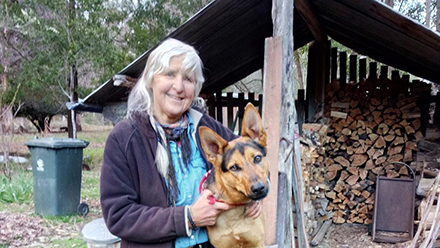Anti-logging campaigners Environment East Gippsland have admitted diverting $336,000 into a trust fund just three weeks before commencing legal action against VicForests, which will stop the money being used to cover any court-awarded costs if it lost the case. Source: Weekly Times
Records submitted to the Supreme Court last week show EEG transferred its money into an Australian Communities Foundation sub-fund – Gippsland Forest Keepers – on 9 April last year and then initiated legal action against VicForests on 11 May 2021.
Once locked away in the sub-fund, the money could only be released back to EEG on the approval of its trustees and “limited to one grant per annum”.
The trustees of the sub-fund are EEG co-ordinator Jill Redwood, the group’s treasurer Trevor Coon and Victorian Greens Party founder Linda Parlane.
During cross-examination in the Supreme Court last week Ms Redwood was asked: “you appreciated, didn’t you, that money would not be available to pay VicForests’ costs” if EEG lost the case?
Ms Redwood answered: “that was probably something that was a consequence of it, yes”.
Asked again by VicForests’ lawyer: “you knew it to be a consequence at the time, didn’t you?” Ms Redwood said: “You would have to think so, yes”.
Victorian Forest Products Association chief executive Deb Kerr said the “testimony from Ms Redwood shows the lengths that environmental groups will go to avoid their responsibilities as part of the litigation process”.
“The group and its members should be held personally accountable to pay for the litigation they run, including any costs orders made by the Courts,” she said.
EEG’s actions follow revelations Agriculture Minister Mary-Anne Thomas recently told VicForests to back off taking legal action to recover $2m in court-ordered costs from another anti-logging group, MyEnvironment.
Asked if she was concerned at EEG squirelling away funds, Ms Thomas’ office said: “as legal proceedings are ongoing, it is not appropriate to comment at this time”.
The Weekly Times contacted Ms Redwood for further comment last week, but she did not respond.
EEG and Kinglake Friends of the Forests sought and gained injunctions from Justice Richards last December blocking VicForests and its contractors from harvesting any East Gippsland and the Central Highlands native forest coupes that are within 240m of greater glider sightings.
At the time 10 harvest and haulage contracting crews were left without work in the lead-up to Christmas, as VicForests struggled to find new coupes.
But government survey teams told The Weekly Times they were finding greater gliders within 240m of every second coupe, and even when they did sign off on a clear site environmentalists were then reporting sightings.
“I was stood down from a coupe recently because a sighting that was made five years ago,” Taggerty-based contractor Mick Johnston said. “I’m sick of going backwards.”
The ongoing uncertainty over access to coupes, protester interruptions and the latest injunctions have led Mr Johnston to abandon an industry that he loves.
“VicForests are doing their best, but shutdowns and the low volumes (of saw logs) mean we’re losing workers.”
Normally about 6000ha of coupes are harvested each year. But that area has now dropped to 3000ha and VicForests records show its contractors were able to harvest only 213,000 cubic metres of saw logs in the eight months to the end of February, compared to 376,433 cubic metres in 2020-21.
Meanwhile survey results on the population of greater gliders in Victoria are showing it is almost as common as the urban brush tail possum.
An Arthur Rylah Institute survey estimated the total population of greater gliders across the Strathbogie Ranges was 69,000, finding 500 individuals within just three coupes.
“Overall, greater gliders occur at mean densities of two to four individuals per hectare across the study area,” the ARI team concluded.








